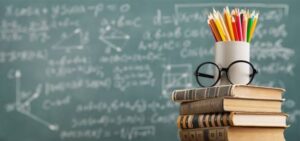Stop Wasting Your Time on School Improvement Plans That Don’t Work. Try
This Instead
Too often, the required actions leaders must accomplish from year to year
become acts of compliance rather than opportunities to learn. When this
happens, leaders often feel more reactive than proactive and feel as though
they can never engage in the instructional-leadership practices they read so
much about.
The examples above are just a few of those actions that are sometimes viewed
as tasks to get over with instead of tasks that we can learn from in our
profession. In these times of increased workloads, teacher shortages, staff
burnout, and high levels of anxiety on the part of teachers, staff, and
leaders, we need to refocus our efforts on those areas that can bring us the
most value and perhaps improve our mindsets around those actions we have
always taken but didn’t get much bang for our buck.
A few weeks ago, I was facilitating days 3 and 4 of a six-day
instructional-leadership professional learning series with teams across
Arkansas. The focus of the learning is developing collective leader efficacy
(which you can learn more about in this video). It occurs when leadership
teams develop a shared conviction that they can have an impact on student
learning and achievement. Basically, collective leader efficacy is a
“researchy” way of understanding how teams come together from a
social-emotional and academic perspective.
One of the most useful actions that teams can take when they are working
together is to create a theory of action. Theories of action help teams
understand what problem they are trying to solve and will help those teams
develop a common language and common understanding around that problem. It
provides them with a space to engage in conversations about how teachers in
the school are doing the work already and creates an opportunity to talk about
how they can go deeper with practices to help them solve their problem.
Additionally, theories of action help the instructional-leadership team stay
focused, so they can be empowered and feel proactive as opposed to feeling
reactive.
I recently developed a theory of action for work I’m involved in as a lead
advisory for the state of Washington with directors of teaching and learning
and am providing it as an example here. If we want leaders and teachers in our
district to possess the necessary understanding, knowledge, and skills to
impact student learning, then we as directors of teaching and learning need to
focus on what necessary understanding, knowledge, and skills are needed to do
that work.
Engage teachers in the discussion about this focus before, during, and after
instead of just creating workshops for them where they have little background
knowledge.
As you can see, developing a theory of action includes understanding our
assumptions and choosing a few high-impact strategies we can take to put our
theory of action into … well, action. Not to get into the weeds in this blog,
but theories of action should also include success criteria, meaning what will
success look like if we effectively complete our theory of action?
From there, we create a program logic model to outline how we will implement
the work. This brings us back to our school improvement plans. School
improvement plans should focus on helping teams focus on the problem they are
trying to solve and be seen as a workable document that is useful to help
schools improve or go deeper with their learning as an organization.
Unfortunately, in many educational circles, the mention of school improvement
plans sucks the oxygen out of the room and makes the eyes of educators gloss
over to the extent that they begin daydreaming about a day when school
improvement plans will prove to be useful, because, in too many cases, they
are acts of compliance. This is not new information, because many researchers
who have come before me have talked about this. Sadly, though, it is still an
issue with many leaders.
Why do we do that? Why do we spend countless hours creating a document that we
really do not plan on using in practical ways because we only created it to
check a box of compliance for our districts or state education department. We
can accuse the district or state for requiring such complicated and unuseful
documents, but in many cases, they are not to blame. We all have a tendency to
create a document using big educational words when, in reality, we should be
creating documents we can actually use and those teachers and staff around us
understand.
It’s a missed opportunity and one that we desperately need to change. The
stress and workload of leaders and teachers has increased tremendously over
the past decade, and we need to identify those actions we take that our
impactful and replace those actions that do not have an impact at all. One
such action that needs to be replaced is that of putting together a school
improvement plan that we cannot, or choose not, to use.
I recently began discussions about de-implementation and published a book on
the topic in the late spring. De-implementation is the abandonment of
low-value practices, which you can learn more about here. There are two ways
of looking at de-implementation, which is through a partial reduction or a
replacement action. In this blog, I focus on partial reductions, but I believe
the discussion about school improvement plans should be a focus for the
replacement action.
When working on a school improvement plan, or what some schools may refer to
as an academic plan, it’s important for its creators to make sure that it is
useful. How do we do that? We do that by:
Inserted below is an example of a program logic model I created for our work
in Washington. I provide it as an example, because when we can include
conversations about our school improvement plans, we will more likely see an
increase in their effectiveness in our school improvement process.
Some of this seems complicated, right? Problems of practice, theories of
action, assumptions, success criteria, and program logic models all seem like
a lot of work. However, what is more work is when leaders create a document in
isolation that they never intend to use and never engage in conversations with
teacher leaders about areas of focus they could work on together.
Areas of focus and problems of practice are not just about gaps and where
schools are not doing a “good job.” Problems of practice are also about areas
where teachers and leaders want to have a deeper impact on student learning.
School improvement plans can be a resource that helps teachers and leaders see
the interconnectedness between faculty meetings, PLC meetings,
instructional-leadership team discussions, and faculty meetings. We no longer
have the time to spend on worthless activities that bring no value and perhaps
we can start with how we approach our school improvement plans.




Leave a Reply